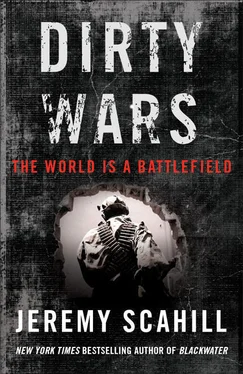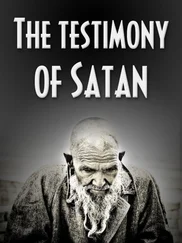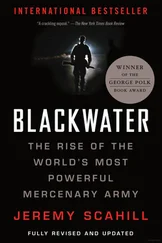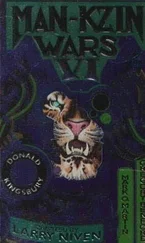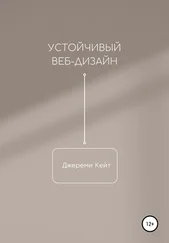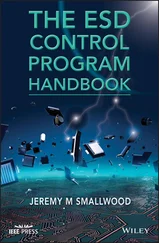As the members of the Senate Select Committee on Intelligence and the House Permanent Select Committee on Intelligence gathered in Washington, DC, half a world away in Afghanistan, tribal and political leaders were convening a loya jirga, a “grand council,” that was tasked with deciding who would run the country following the swift overthrow of the Taliban government by the US military. After 9/11, the US Congress had granted the Bush administration sweeping powers to pursue those responsible for the attacks. The Taliban government, which had ruled Afghanistan since 1996, was crushed, depriving al Qaeda of its sanctuary in Afghanistan. Osama bin Laden and other al Qaeda leaders were on the run. But for the Bush administration, the long war was just getting started.
At the White House, Vice President Dick Cheney and Defense Secretary Donald Rumsfeld were deep into planning the next invasion—Iraq. They had come to power with plans to topple Saddam Hussein in hand and, despite the fact that there was no Iraqi connection to the attacks, they used 9/11 as the pretext to push their agenda. But the decisions made in that first year of the Bush administration were much bigger than Iraq, Afghanistan or even al Qaeda. The men in power at that time were intent on changing the way the United States waged its wars and, in the process, creating unprecedented powers for the White House. The days of fighting uniformed enemies and national militaries according to the rules of the Geneva Conventions were over. “The world is a battlefield” was the mantra repeated by the neoconservatives in the US national security apparatus and placed on PowerPoint slides laying out the plans for a sweeping, borderless global war. But terrorists would not be their only target. The two-hundred-year-old democratic system of checks and balances was firmly in their crosshairs.
Room S-407 was nestled in the attic of the Capitol building. It was windowless and accessible only by one elevator—or a narrow staircase. The room was classified as a secure facility and had been fitted with sophisticated counterespionage equipment to block any attempt at eavesdropping or monitoring from outside. For decades, the room had been used to house the most sensitive briefings of members of Congress by the CIA, the US military and scores of other figures and entities that inhabit the shadows of US policy. Covert actions were briefed and debriefed in the room. It was one of a handful of facilities in the United States where the nation’s most closely guarded secrets were discussed.
As the senators and representatives sat in the closed-door session on Capitol Hill that morning in June 2002, they would hear a story of how the United States had crossed a threshold. The stated purpose of the hearing was to review the work and structure of US counterterrorism (CT) organizations before 9/11. At the time, there was a substantial amount of finger-pointing regarding US intelligence “failures” leading up to the attacks. In the aftermath of the most devastating terrorist strikes on US soil in history, Cheney and Rumsfeld charged that the Clinton administration had failed to adequately recognize the urgency of al Qaeda’s threat, leaving the US homeland vulnerable by the time the Bush White House took power. Democrats pushed back and pointed to their own history of combating al Qaeda in the 1990s. The appearance of Richard Clarke before the US lawmakers on this particular day was, in part, intended to send a message to the congressional elite. Clarke had been President Bill Clinton’s counterterrorism czar and chaired the Counterterrorism Security Group of the National Security Council (NSC) for the decade leading up to 9/11. He had also served on President George H. W. Bush’s National Security Council and was an assistant secretary of state under President Ronald Reagan. He was one of the most experienced counterterrorism officials in the United States and, at the time of the hearing, was on his way out of government, though he still held a post as a special adviser to President George W. Bush on cyberspace security. Clarke was a hawkish figure who had risen to prominence under a Democratic administration and was known to have pushed hard when Clinton was in power for more covert action. So it made tactical sense that the Bush administration would put him forward to make the case for a regime of military and intelligence tactics that had previously been deemed illegal, undemocratic or, simply, dangerous.
Clarke described the dialogue within the national security community under Clinton as marked by great concern over the possibility of violating a long-standing presidential ban on assassination and a deep fear of repeating scandals of the past. Clarke said he believed that “a culture” had developed at the CIA “that said when you have large scale of covert operations, they get messy, and they get out of control, and they end up splattering mud back on the Agency.”
“The history of covert operations in the 1950s and 1960s and 1970s was not a happy one,” Clarke told the lawmakers. The CIA had orchestrated the overthrow of populist governments in Latin America and the Middle East, backed death squads throughout Central America, facilitated the killing of rebel leader Patrice Lumumba in the Congo and propped up military juntas and dictatorships. The spate of assassinations had become so out of control that a Republican president, Gerald Ford, felt the need to issue Executive Order 11905 in 1976, explicitly banning the United States from carrying out “political assassinations.” The CIA officers who had come of age in the shadow of that era and rose to positions of authority at the Agency during the 1990s, Clarke said, “had institutionalized [the notion that] a sense of covert action is risky and is likely to blow up in your face. And the wise guys at the White House who are pushing you to do covert action will be nowhere to be found when [the Senate Select Committee on Intelligence] calls you up to explain the mess that the covert action became.”
President Jimmy Carter amended Ford’s assassination ban to make it more sweeping. He removed language that limited the ban to political assassinations and also extended the ban on participating in assassinations to US proxies or contractors. “No person employed by or acting on behalf of the United States Government shall engage in, or conspire to engage in, assassination,” read President Carter’s executive order. Although Presidents Reagan and George H. W. Bush maintained that language, no president’s executive orders actually defined what constituted an assassination. Reagan, Bush and Clinton all developed work-arounds to the ban. Reagan, for example, authorized a strike on the home of Libyan dictator Muammar el Qaddafi in 1986 in retaliation for his alleged role in a bombing of a night club in Berlin. The first President Bush authorized strikes on Saddam Hussein’s palaces during the 1991 Gulf War. Clinton did the same during Operation Desert Fox in 1998.
Clarke described for the lawmakers how, under the Clinton administration, plans were drawn up for killing and capturing al Qaeda and other terrorist leaders, including Osama bin Laden. President Clinton asserted that the ban did not apply to foreign terrorists engaged in plotting attacks against the United States. In the aftermath of the bombings of the US Embassies in Kenya and Tanzania in late 1998, Clinton authorized cruise missile attacks against alleged al Qaeda camps in Afghanistan and also a strike against a factory in Sudan that the administration alleged was a chemical weapons plant. It turned out that the plant was actually a pharmaceutical factory. Although this lethal authority was granted by Clinton, it was envisioned as an option that would be rarely used and only at the direction of the president on a case-by-case basis. Rather than granting a carte blanche authority to conduct these operations, the Clinton White House required each proposed action to be thoroughly vetted. Legal structures were put in place and “lethal findings” were signed by the president, authorizing the use of deadly force in pursuit of terrorists across the globe. Yet, Clarke said, the trigger was seldom pulled.
Читать дальше
